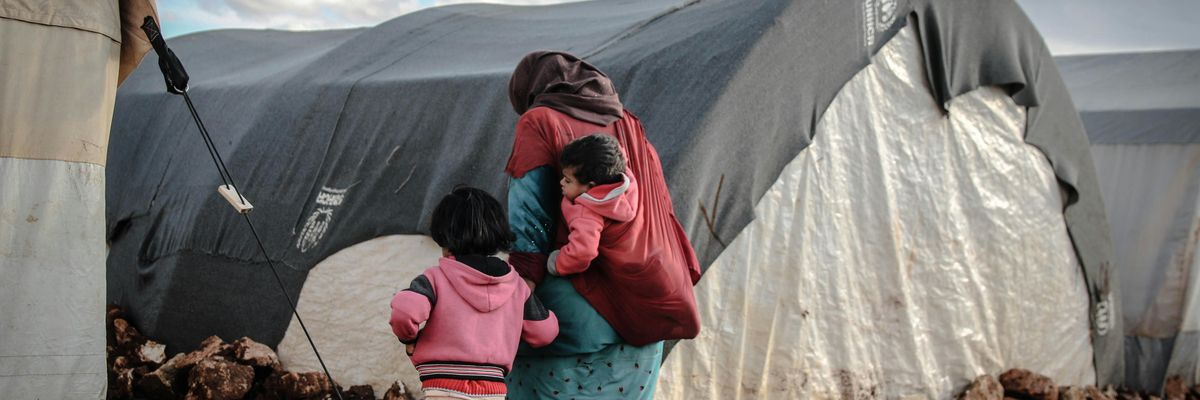
When disasters, conflicts, or crises strike, millions of people around the world find themselves caught in the chaos. For some, returning home becomes impossible, and that’s where Temporary Protected Status (TPS) comes in. This U.S. immigration program is a lifeline for many, offering a temporary safe haven to those who can’t safely return to their home countries. But what exactly is TPS, and how does it work? Here are 10 key facts you should know.
TPS Was Created as a Humanitarian Measure

Photo by Tom Fisk
TPS was established under the Immigration Act of 1990 as a way for the U.S. to provide humanitarian relief to people from countries experiencing extreme conditions, like armed conflict, environmental disasters, or other extraordinary circumstances that make returning home unsafe. The idea is simple: if a country is going through a crisis, its citizens already in the U.S. shouldn’t be forced to return to danger.
Not Just Anyone Can Apply

Photo by Leeloo The First
To qualify for TPS, an individual must be a national of a country designated for TPS and must have been continuously present in the U.S. since a specific cutoff date. There’s also a designated registration period during which eligible individuals must apply. Simply being from a country in crisis isn’t enough, you have to meet strict guidelines and deadlines.
It Protects People from Deportation

David Peinado Romero - Shutterstock
One of the biggest benefits of TPS is that it protects recipients from deportation while their status is active. That means TPS holders cannot be removed from the U.S. simply because their home country is in turmoil. This protection gives people the stability they need to work, live, and contribute to their communities without fear of being sent back to dangerous conditions.
TPS Holders Can Work Legally in the U.S.

Photo by Andrea Piacquadio
TPS doesn’t just keep people safe, it also allows them to support themselves. TPS recipients can apply for work authorization, meaning they can get jobs, pay taxes, and fully participate in the economy. Some even open businesses, buy homes, and become integral parts of their communities.
The U.S. Government Decides Which Countries Qualify
 Photo by Samuel Schroth on Unsplash
Photo by Samuel Schroth on UnsplashThe Secretary of Homeland Security decides which countries qualify for TPS. This decision is made in consultation with other government agencies and is based on conditions in the home country. Once a country is designated for TPS, the decision can't be challenged in court and it’s entirely up to the U.S. government.
It’s Temporary, But Can Be Renewed
 Photo by Emanuel Ekström on Unsplash
Photo by Emanuel Ekström on UnsplashTPS is not a permanent immigration status. It’s granted for 6, 12, or 18 months at a time, and the U.S. government must reassess conditions in the home country before deciding whether to extend the designation. If the crisis continues, TPS can be renewed, but if the government decides the situation has improved, TPS holders may have to return home or find another legal status to remain in the U.S.
TPS Doesn't Lead to Citizenship
 Photo by Global Residence Index on Unsplash
Photo by Global Residence Index on UnsplashDespite being a lifeline for many, TPS does not provide a direct path to permanent residency or U.S. citizenship. It is strictly a temporary status meant to protect people until their home country stabilizes. However, some TPS holders may be able to adjust their status through family sponsorship, employment-based visas, or other immigration relief programs.
Hundreds of Thousands of People Rely on TPS
 Photo by Owen Cannon on Unsplash
Photo by Owen Cannon on UnsplashAs of March 2024, around 863,880 people in the U.S. were living under TPS protections. Many of them have built their lives here, with long-standing ties to their communities. States with large TPS populations include Florida, Texas, and California, where recipients contribute to the economy and workforce.
Multiple Countries Have TPS Designation
 Photo by Kyle Glenn on Unsplash
Photo by Kyle Glenn on UnsplashTPS is currently granted to individuals from several countries, including Haiti, El Salvador, Honduras, Nepal, Nicaragua, Somalia, South Sudan, Sudan, Syria, and Yemen. While these designations change over time, they reflect ongoing crises that make returning unsafe for people from these nations.
TPS Holders Go Through Security Screenings

Photo by Towfiqu barbhuiya
Applying for TPS isn’t a free pass. Recipients must pass background checks and security screenings every time they renew their status, which is usually every 18 months. The process includes fingerprinting and background checks to ensure that recipients do not pose a security risk.
- Expat If You’re an American in Latin America, Immigrant If You’re a Latino in the U.S. ›
- Unpacking the Birthright Debate: Is Citizenship by Birth Under Threat? ›




